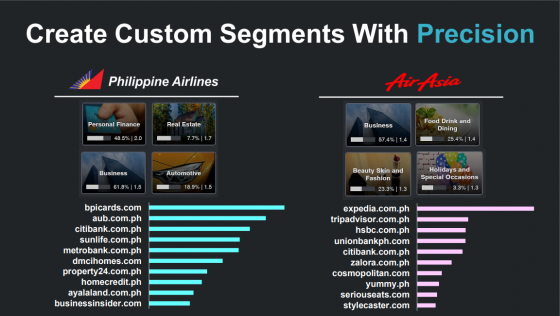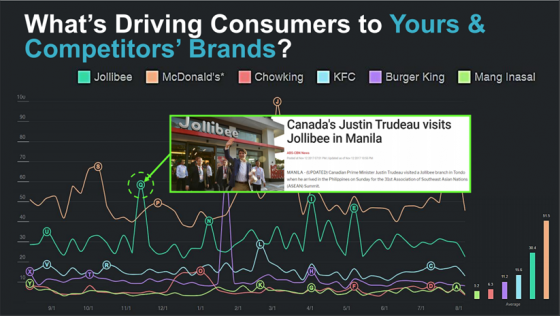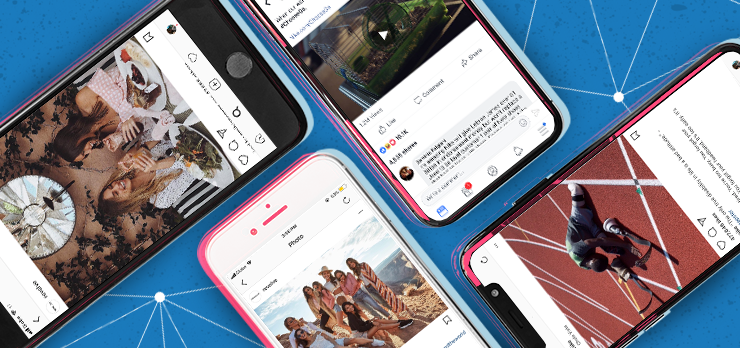Year after year, the use of technology has become increasingly widespread and accessible. Smartphones, mobile data plans and other tech gadgets are more affordable for the regular Filipino, with free access to WiFi available almost everywhere you go. With this overabundance of potential consumer touchpoints, the digital consumer holds more power in their hands now than ever before.
In this new digital ecosystem, consumers’ limited time and attention are distributed over an increasing number of brands who are aggressively fighting to emerge victorious from this data avalanche. Now that messages which brands aim to bring across are easily diluted in the mass of advertisements, organic content is dead, and ads are conveniently skipped, businesses must compete in the arena of delivering the perfect customer experience — and in the arena of experience, relevance is a crucial weapon to possess.
In the Asia-Pacific region alone, more than half of the consumers prefer content which are personalized according to their needs and preferences. While most advertisers think they’ve gotten better at delivering relevant ads over the past 2 years, 1 in 3 millennials beg to differ. This poses an existing gap between customers’ desires, and current market delivery, which presents a golden opportunity for brands who can ultimately achieve precision targeting.

Most advertisers have access to various insight tools such as social listening, but are they using the right tool, and are they using it correctly? Dillon Lim (Vice President: Strategic Business Development, Analytics & Insights, Amobee) at his recent talk at DigiCon 2018 suggests the following ways in which you can utilize brand intelligence to create more relevant campaigns:
Create customer personas
You probably already have an idea of who your consumers are: if you’re a brand of scotch, one of your audience segments is likely to be the middle-aged men. However, mass advertising to any 50-year-old man runs the risk of serving your ads to a broad audience who may not particularly care for your brand, or displaying your ads on websites that your consumers don’t actually visit regularly.
This is where customer segmentation comes in handy: by creating more granular segments, you create a more nuanced understanding of who your audience is beyond the basic perimeters of age and gender demographics, allowing you to communicate to them more effectively, with more relevant content that matters.

Based on the above image, Philippine Airlines may want to tailor their ads to cater to business-minded people by offering ads for promos on business class seats. On the other hand, AirAsia’s consumers have more varied interests, which can be segmented into smaller subgroups and served customized content: best restaurants to visit for the foodies, or budget-friendly shopping destinations for the fashionistas.
Leverage your brand positioning
Consumer behaviors and interest in a brand can change over time, sometimes overnight. This is evident from the visit by Canadian PM Justin Trudeau to a Jollibee outlet in November 2017, a simple event which sent people flocking to the nearest Jollibee branch in droves:

With the help of brand intelligence, you can keep a pulse on how your audience is consuming your brand or product category in real time. In this way, you never miss an opportunity to execute brand activation, and at the same time immediately assess how effective it is in generating consumer sentiment, whether positive, neutral, or negative.
Brand intelligence can also capture what consumers think about your brand, as well as your competitors, allowing you to leverage qualities that audiences perceive to be your strengths or attributes which are are unique to your brand. Similar insights can also be used to adjust communications strategically, should you have a minimal share-of-voice in certain spaces that you want to be better known for.

In this day and age, every second counts, and real-time brand intelligence is quickly becoming an invaluable resource in creating relevant content. However, content creation is just one half of the equation; without automated ad buying processes, you risk serving great ads one second too late.
Programmatic advertising allows you to serve the right content to the right people at the right time. If you’d like to learn more about these solutions, drop us a line at https://adspark.ph/contact-us/.




